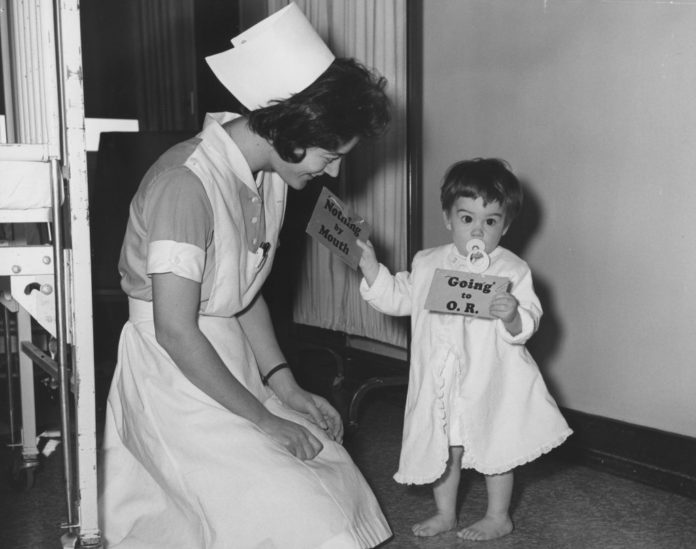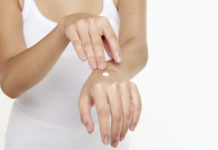When you buy something using the links on our posts, we may earn a small commission at no additional cost to you. Learn more.
During the summer of 1956, before entering nursing school, potential students were sent a list of necessary items to ensure that our attire would meet the standards for a “complete” uniform. It came under the title of Official Information so we knew we must comply.
We needed:
- Name pin which was supplied by the Nursing Office
- Wristwatch with a second hand – without the second hand we would have been at a loss to regulate IV rates and take vital signs.
- One pair of bandage scissors, a pen and a pencil.
- The student uniform, ordered from a company in New York City – we prayed we had sent the right measurements as the supply had to last for three years.
- White shoes preferably with eight eyelets and a low heel.
- The school cap – for this we were billed $1.75.
- Navy blue cardigan to wear on cold days with our uniform.
- A hair net to wear on duty if your hair was shoulder length.
- Except for an engagement or wedding ring, no jewelry was to be worn.
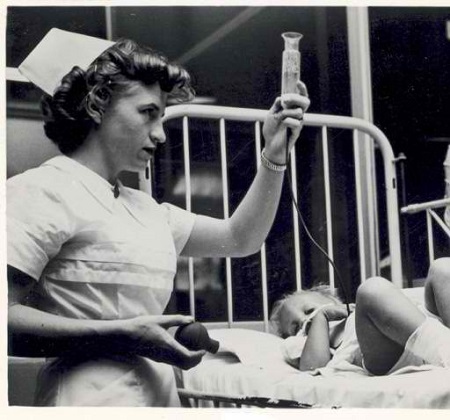
The uniforms came with exceptionally deep pockets on each side of the skirt, which we soon found out how to make good use of. We had to carry a lot of things to help us with our bedside care.
We always had:
- A pen – preferably one which you could change colors from black to red. Charting was done in black ink indicating 7am to 7pm. From 7pm to 7am red ink was used. Military time was thought to be too complicated to use.
- A pencil for updating treatment plans which were not a part of the permanent record and could be erased.
- Bandage scissors which were used for a myriad of tasks with little thought given to disinfecting them between patients.
- A pack of cigarettes, if you smoked and many of us did, kept handy for a quick break. The pockets were always littered with shreds of tobacco as a result of this habit. If you were going to become a nurse, it was very important that you look like one.
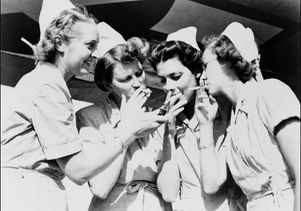
That thinking is just as important today as in the 1950s; however, the nurse of today looks very little like those of a bygone era. I have seen this change firsthand during my career as a nurse that spanned 50 years. I’ve encountered the good, the bad, and the ugly— something I talk more of in my new book Nightingale Tales.
Today, the nurse’s complete uniform might look like:
- Name pin with an identifying large letter label that indicates Registered Nurse.
- Scrubs, in a color of the hospital’s choice to indicate that the wearer is a registered nurse.
- Shoes that are comfortable, often a colorful athletic shoe.
- Jewelry of all kinds is acceptable including piercings, and sometimes tattoos.

Nurses’ pockets today are deep and plentiful and most likely filled to overflowing with items such as:
- A personal stethoscope as opposed to the old time practice of using a community one with little attention to disinfecting between uses and frequently the cause of an ear infection among the users.
- A time piece – a phone may substitute for a watch.
- A phone/communication device to receive calls, alarms and messages and with the ability to access the internet and text physicians.
- The ubiquitous pair of scissors hopefully kept disinfected with an alcohol wipe, and a pen.
- A few needed supplies like tape and alcohol sponges.
The changes in the nurses’ appearance have been good ones. The useless caps were endearing but unnecessary. Today, the shoes are comfortable throughout the long twelve hour shifts. The uniforms with pants are more practical for the many situations nurses are subjected to. Men and women look equally as good in scrubs, an unnecessary consideration fifty years ago when all but a few nurses were women. And thankfully, the cigarettes are a thing of the past.
See Also: 5 Best Scrubs You Can Buy Online
What nurses keep in their pockets is what really has made a huge difference in care delivery. Most importantly, the phones used for communication, eliminating the need for all the over-head paging, so pervasive before the current hi-tech era. What patient can get a good night’s sleep when the sounds from the hall reverberate with the hospital operator screeching Dr. So and So call the emergency room every few minutes? Phones are so commonplace today that they are taken for granted – but what a gift- the ability to communicate silently through texting.
ABOUT THE AUTHOR:
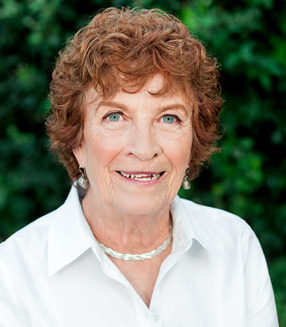 Lynn Dow is a seasoned nurse with laugh-out-loud stories spanning 50 years in the profession. Told with humor and compassion, her new book Nightingale Tales (out Oct. 3) provides an unusual and highly entertaining window into the world of medicine from the mid-twentieth century to the present.
Lynn Dow is a seasoned nurse with laugh-out-loud stories spanning 50 years in the profession. Told with humor and compassion, her new book Nightingale Tales (out Oct. 3) provides an unusual and highly entertaining window into the world of medicine from the mid-twentieth century to the present.


